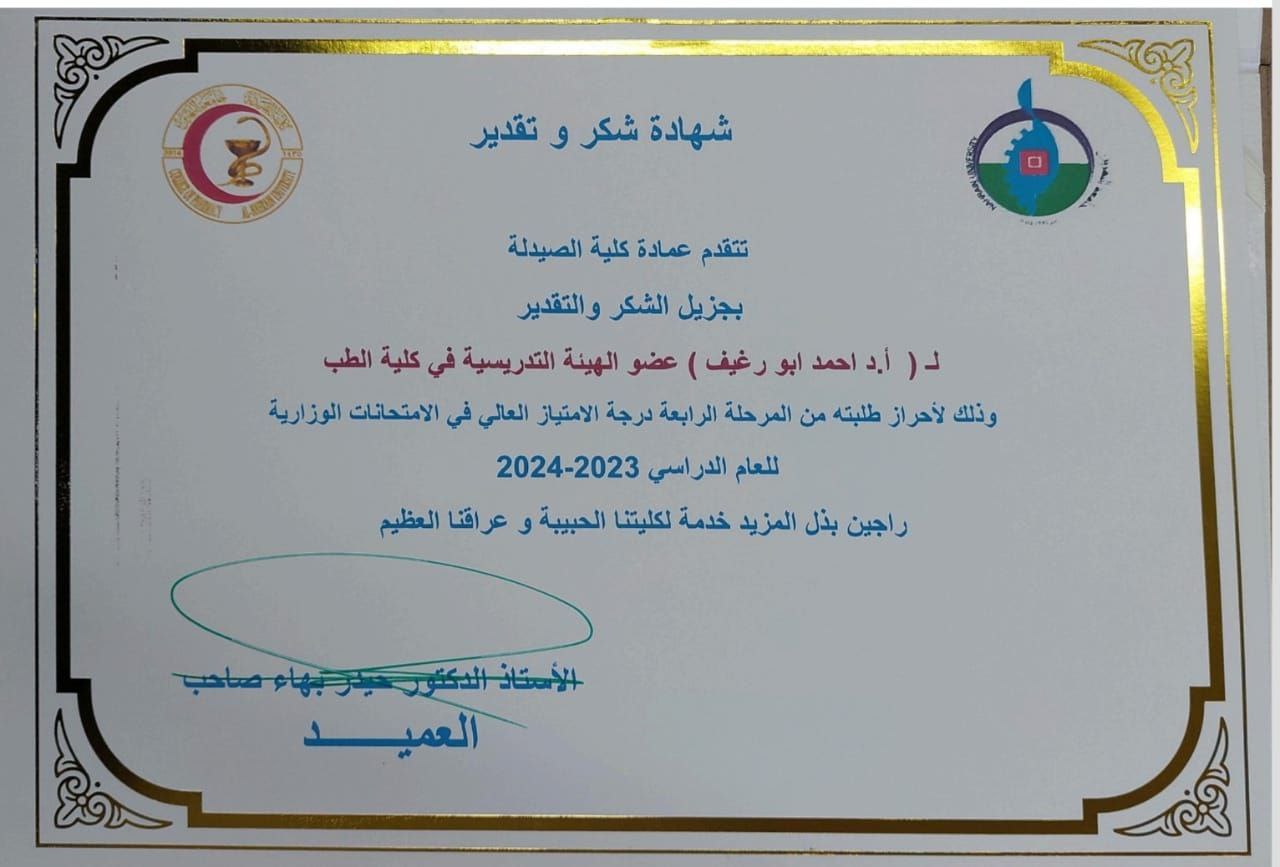|
| Department of Pharmacology and Therapeutics |
| • Pharmacology Branch was founded in the 1989-1990 academic year to begin the scientific process where the branch has always paid great attention to the quality of academic education and helping students in the study of Pharmacology and Therapeutics and their relationship to clinical fields
• The pharmacology branch is responsible for teaching the science of pharmacology for third year undergraduate students of the College of Medicine as a basic material in the study of medicine .The branch begins teaching the material with an introduction to the kinetics and dynamics of the drug passing through the drug discovery process .It also provides basic knowledge of the functions of the various drugs clinically, and through study courses in pharmacology branch while students continue to learn the basics in physiology, pathology and biochemistry to employ them in Learning the effectiveness of medication.
• The branch began granting high academic degrees (MSc) in 1994 and doctorate in 1999.The branch is not linked to Iraqi or Arabic Board of Medical Specialties.
• With regard to graduate students (master's), in addition to the commitment of pharmacology branch in the teaching of pharmacology and toxicology sciences, the branch involves students in the pharmaceutical selections material and seminars to discuss the newly emerging scientific problems that have a relation with the use of medications. With regard to doctoral students, the branch teaches them advanced pharmacology with details related to the molecular mechanism of the medications effectiveness .In the practical part all graduate students participates and is designed to conduct relevant selected experiments that is related to pharmacological effects on various body systems.
|
|
|
@
| Professor Dr. Ahmed Rahma Abu Ragheef received a letter of thanks and appreciation from the College of Pharmacy at Al-Nahrain. |
Dr. Ahmed Rahma Abu Ragheef, a professor in the Pharmacology department, received a certificate of appreciation from the Dean of the College of Pharmacy at the University of Al-Nahrain. This recognition was for his students achieving high distinction in the ministry exams for the academic year 2023-2024. 
|
| |
@
@
| Dr. Sabrine Saad Salman participated in the conference organized by the Ministry of Youth and Sports. |
A lecturer from the Department of Pharmacology participated in the conference organized by the Ministry of Youth and Sports, Women's Affairs Section, in cooperation with the Al-Maha Cultural Association. The "Women Leadership Forum" was held in the Hall of International Relations and Cooperation at the Ministry headquarters on Monday, June 24, 2024, at 10:00 AM. The conference addressed several topics related to women's leadership roles in society, including the foundations of creating female leaders, social obstacles to leadership roles, and the characteristics of female leaders. Dr. Sabrine Saad Salman discussed the differences between the leadership roles of women and men. 

|
| |
@
|
|
|